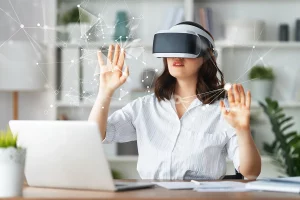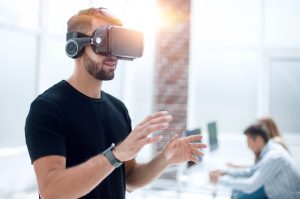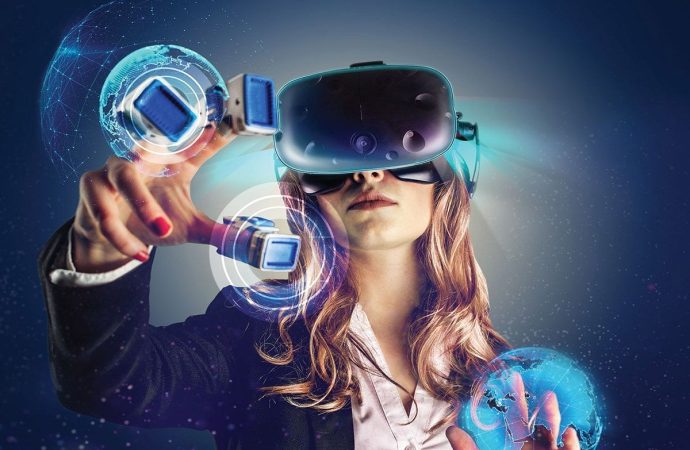Introduction In recent years, the rapid advancement of technology has revolutionized various aspects of our lives, from communication and entertainment to education and healthcare. One of the most significant impacts of this technological evolution is the creation of immersive experiences. These experiences transport users into virtual or augmented realities, providing a sense of presence and
Introduction
In recent years, the rapid advancement of technology has revolutionized various aspects of our lives, from communication and entertainment to education and healthcare. One of the most significant impacts of this technological evolution is the creation of immersive experiences. These experiences transport users into virtual or augmented realities, providing a sense of presence and engagement that traditional media cannot match. This article explores the role of technology in creating immersive experiences, examining the various tools, platforms, and innovations that have made this possible.
The Evolution of Immersive Technology

Image by: Google.com
- Early Beginnings
The concept of immersive experiences can be traced back to early forms of storytelling and entertainment, such as theater and literature. However, it wasn’t until the advent of digital technology that truly immersive experiences began to take shape. Early attempts at creating immersive environments included flight simulators and virtual reality (VR) systems developed for military and industrial training purposes.
- The Rise of Virtual Reality
Virtual reality technology has come a long way since its inception. Early VR systems were bulky, expensive, and limited in their capabilities. Today, VR headsets like the Oculus Rift, HTC Vive, and PlayStation VR offer high-resolution displays, precise motion tracking, and a wide range of applications, from gaming and entertainment to education and therapy.
- Augmented Reality and Mixed Reality
While virtual reality creates entirely digital worlds, augmented reality (AR) and mixed reality (MR) blend digital and physical environments. AR overlays digital information onto the real world, enhancing our perception and interaction with our surroundings. Popular examples include Pokémon GO and AR features in smartphones. Mixed reality takes this a step further by allowing digital objects to interact with the physical world, as seen in devices like the Microsoft HoloLens.
Key Technologies Enabling Immersive Experiences

Image by: Google.com
- High-Resolution Displays
One of the critical components of immersive technology is the display. High-resolution screens with fast refresh rates and wide fields of view are essential for creating realistic and engaging experiences. Advances in display technology, such as OLED and micro LED, have significantly improved the visual quality of VR and AR devices.
- Motion Tracking and Haptics
Accurate motion tracking and haptic feedback are crucial for creating a sense of presence in immersive environments. Motion tracking systems use sensors and cameras to capture the user’s movements and translate them into the virtual world. Haptic feedback devices, such as gloves and vests, provide tactile sensations, allowing users to feel virtual objects and interactions.
- Spatial Audio
Sound plays a vital role in creating immersive experiences. Spatial audio technology simulates how sound behaves in the real world, providing directional cues and a sense of depth. This enhances the realism and immersion of VR and AR applications, making users feel like they are truly part of the environment.
- Artificial Intelligence and Machine Learning
Artificial intelligence (AI) and machine learning (ML) are transforming immersive experiences by enabling more realistic and interactive environments. AI can generate lifelike characters, predict user behavior, and adapt the virtual world in real-time. Machine learning algorithms can also improve motion tracking, object recognition, and other critical aspects of immersive technology.
Applications of Immersive Technology

Image by: Google.com
- Gaming and Entertainment
The gaming industry has been at the forefront of adopting immersive technology. VR and AR games provide players with unparalleled levels of engagement and interactivity. Beyond gaming, immersive experiences are also transforming other forms of entertainment, such as virtual concerts, interactive movies, and theme park attractions.
- Education and Training
Immersive technology has the potential to revolutionize education and training by providing experiential learning opportunities. VR and AR can simulate real-world scenarios, allowing students and trainees to practice skills in a safe and controlled environment. Applications range from medical training and aviation to language learning and history lessons.
- Healthcare and Therapy
In healthcare, immersive technology is being used for various therapeutic and diagnostic purposes. VR can help treat conditions such as anxiety, PTSD, and chronic pain through exposure therapy and distraction techniques. AR can assist surgeons by overlaying digital information onto the patient’s body, improving precision and outcomes.
- Retail and Marketing
Retailers and marketers are leveraging immersive technology to create engaging and personalized shopping experiences. AR allows customers to visualize products in their own space before making a purchase, while VR can provide virtual store tours and product demonstrations. These applications enhance customer satisfaction and drive sales.
- Architecture and Real Estate
Immersive technology is transforming the architecture and real estate industries by enabling virtual walkthroughs and simulations. Architects can use VR to present their designs to clients, allowing them to explore and interact with the space before construction begins. Real estate agents can offer virtual property tours, making it easier for potential buyers to envision their future homes.
Challenges and Future Directions

Image by: Google.com
- Technical Limitations
Despite significant advancements, immersive technology still faces several technical challenges. High-quality VR and AR experiences require powerful hardware and significant computational resources. Ensuring seamless motion tracking and reducing latency are ongoing areas of research and development.
- Accessibility and Affordability
Making immersive technology accessible and affordable for a broader audience is another challenge. High-end VR and AR devices can be expensive, limiting their adoption. Efforts are being made to develop more affordable and user-friendly options, such as standalone VR headsets and AR-enabled smartphones.
- Ethical and Privacy Concerns
As immersive technology becomes more prevalent, ethical and privacy concerns must be addressed. Issues such as data security, user consent, and the potential for addiction or psychological effects need careful consideration. Establishing guidelines and regulations will be essential to ensure the responsible use of immersive technology.
- The Future of Immersive Experiences
The future of immersive technology holds exciting possibilities. Advances in AI, 5G connectivity, and wearable devices will continue to enhance the quality and accessibility of immersive experiences. As technology evolves, we can expect to see even more innovative applications, from virtual tourism and remote collaboration to immersive storytelling and beyond.
Conclusion
Technology has played a pivotal role in creating immersive experiences, transforming how we interact with digital and physical worlds. From high-resolution displays and motion tracking to AI and spatial audio, various technological advancements have made these experiences more realistic and engaging. As immersive technology continues to evolve, its applications will expand across gaming, education, healthcare, retail, and beyond, offering new opportunities for innovation and impact. However, addressing technical, accessibility, and ethical challenges will be crucial to realizing the full potential of immersive experiences.
















